Sugarcane, known as kō in Hawaiian, is a story of Polynesia. The plant originated in Papua New Guinea and then expanded outwards via waa or Polynesian voyaging canoe. Back then, Native Hawaiians had multiple uses for kō; for example, it was used in celebrations and as medicine. However, almost all the cane planted on Hawaii’s sugar plantations, including the popular H50-7209, were chosen for yield and ease of cultivation. Kō Hana’s founders, Robert Dawson and Jason Brand, chose to repropagate these heirloom varieties and distill them in a way that “harnessed the beauty within” them. We asked Kō Hana’s general manager, Kyle Reutner, about the approach to their process. This is what he shared: “We make a lot of our decisions based on what tastes the best. That was it. We get lower yields than I would like, and in no way would I say our way is the most efficient from a production standpoint; however, from a product standpoint, it's exactly what we were shooting for.”
Hawaii Beverage Guide was able to visit the distillery and learn more from Reutner.
Hawaii Beverage Guide was able to visit the distillery and learn more from Reutner.
Founding Story
-
Founding Story
-
Team
-
Distillery Name
<
>
Founding Story
Before making the decision to make rum, Robert Dawson and Jason Brands made a decision to start growing sugarcane. According to Reutner, “Robert wanted to do something rooted. He had been incredibly successful in a different line of work, and came to Hawaii with his wife to raise their son. When their son started kindergarten, he decided that he wanted to do something that was relevant culturally and agriculturally.”
Sometime between late 2008 and early 2009, Dawson was introduced to and fell in love with the canoe plant varieties of sugarcane brought over from Polynesia. During that time, he met the researchers at the Hawaii Agricultural Research Center (HARC), an offshoot of the research division of the Hawaii Sugar Planters Association. HARC, not coincidentally, is located across from Kō Hana’s distillery where “you've got a bunch of academics and all this intelligence sitting one building away. There's nothing an academic wants more than to share the knowledge that they've gained. You're talking to Robert “Bob” Osgood (former Assistant Director of Research at HARC) and Stephanie Waylon (Executive Director of HARC) who are deeply ingrained in Old Kunia [when] it used to all be all sugarcane and then when it became pineapple.” Said Reutner.
One day, when Robert, Bob, Stephanie and others were having a powwow, Robert requested to rent a quarter acre from HARC to try to grow some canes in collaboration with Dr Noah Lincoln, who was introduced to Robert through Bob and Stephanie. Robert was hoping to lockstep with Dr. Lincoln; Dr. Lincoln would be able to help him find certain canes, while he searched for other ones. This resulted in Kō Hana’s first farm, which was a quarter-acre plot by Kunia Elementary School. There, one of every Hawaiian Kō that Dawson found was planted, grown out, and used as “seed” for new plants.
During this time, co-founder Jason Brand, a former Merrill Lynch financier, was starting Kuna Farms, the lettuce farm adjacent to the distillery, to develop farming practices.
Reutner recanted, “[On] the very first business plan Robert ever showed me a long, long time ago, the goals were really simple. Robert wanted to make a rum from start to finish in Hawaii for Hawaii. Why import all of these things to make spirits when he could grow them? Robert wanted to make really great rum wholly here and not blended here and not added here; not distilled here or redistilled here.”
Before making the decision to make rum, Robert Dawson and Jason Brands made a decision to start growing sugarcane. According to Reutner, “Robert wanted to do something rooted. He had been incredibly successful in a different line of work, and came to Hawaii with his wife to raise their son. When their son started kindergarten, he decided that he wanted to do something that was relevant culturally and agriculturally.”
Sometime between late 2008 and early 2009, Dawson was introduced to and fell in love with the canoe plant varieties of sugarcane brought over from Polynesia. During that time, he met the researchers at the Hawaii Agricultural Research Center (HARC), an offshoot of the research division of the Hawaii Sugar Planters Association. HARC, not coincidentally, is located across from Kō Hana’s distillery where “you've got a bunch of academics and all this intelligence sitting one building away. There's nothing an academic wants more than to share the knowledge that they've gained. You're talking to Robert “Bob” Osgood (former Assistant Director of Research at HARC) and Stephanie Waylon (Executive Director of HARC) who are deeply ingrained in Old Kunia [when] it used to all be all sugarcane and then when it became pineapple.” Said Reutner.
One day, when Robert, Bob, Stephanie and others were having a powwow, Robert requested to rent a quarter acre from HARC to try to grow some canes in collaboration with Dr Noah Lincoln, who was introduced to Robert through Bob and Stephanie. Robert was hoping to lockstep with Dr. Lincoln; Dr. Lincoln would be able to help him find certain canes, while he searched for other ones. This resulted in Kō Hana’s first farm, which was a quarter-acre plot by Kunia Elementary School. There, one of every Hawaiian Kō that Dawson found was planted, grown out, and used as “seed” for new plants.
During this time, co-founder Jason Brand, a former Merrill Lynch financier, was starting Kuna Farms, the lettuce farm adjacent to the distillery, to develop farming practices.
Reutner recanted, “[On] the very first business plan Robert ever showed me a long, long time ago, the goals were really simple. Robert wanted to make a rum from start to finish in Hawaii for Hawaii. Why import all of these things to make spirits when he could grow them? Robert wanted to make really great rum wholly here and not blended here and not added here; not distilled here or redistilled here.”
- Robert Dawson Co-Founder
- Jason Brand: Co-Founder
- Kyle Reutner: General Manager
- Tiffany: Outreach Manager
- Zach Villanueva: Experience Manager
- Derek Sheldon: Farm Manager
- Tyler Johnson: Distiller
Distillery Name
Though Manulele Distillers is the company's legal name, they officially go by Kō Hana Distillers. Reutner explained, “Manulele is always going to be really important to us because it's the name of the first Hawaiian sugar cane we ever found. However, we want to show ourselves to the world, so our name is now Kō Hana Distillers, but Manulele is technically still the legal name of the entire entity.”
Though Manulele Distillers is the company's legal name, they officially go by Kō Hana Distillers. Reutner explained, “Manulele is always going to be really important to us because it's the name of the first Hawaiian sugar cane we ever found. However, we want to show ourselves to the world, so our name is now Kō Hana Distillers, but Manulele is technically still the legal name of the entire entity.”
-
Why Rum Agricole?
-
Approach to Rum
<
>
Why Rum Agricole?
Rum is typically made from molasses, a byproduct from sugar production. Given that there are no longer sugar mills in Hawaii, molasses is no longer produced. Reutner commented, “Molasses doesn't make sense because I'm not going to import molasses into a place that can grow sugarcane. From that angle, using fresh cane was going to be the way that we were going to go. I see the freshness and availability of that delicious juice as a positive. It's interesting because if you were to ask three different rum distillers their opinions about the starting material, you'll get six different answers. The truth of the matter is that all of them are really cool and unique ideas, and they bring their own thing to the rum world. Our take in all of this is to treat our cane like a vintner treats their grapes; leave it alone and it's going to tell a better story. That's our thesis.”
As far as the usage of the word “agricole,” Reutner said, “we always chase the word Agricole with Hawaiian. We try to make sure that [the distinction between our product and Appellation d'origine Contrôlée Rhum Agricole] are very clear. I have a lot of love for traditional Martinique, French Rhum Agricole makers. We make Hawaiian Agricole, which is our take on something that they do very well.”
Rum is typically made from molasses, a byproduct from sugar production. Given that there are no longer sugar mills in Hawaii, molasses is no longer produced. Reutner commented, “Molasses doesn't make sense because I'm not going to import molasses into a place that can grow sugarcane. From that angle, using fresh cane was going to be the way that we were going to go. I see the freshness and availability of that delicious juice as a positive. It's interesting because if you were to ask three different rum distillers their opinions about the starting material, you'll get six different answers. The truth of the matter is that all of them are really cool and unique ideas, and they bring their own thing to the rum world. Our take in all of this is to treat our cane like a vintner treats their grapes; leave it alone and it's going to tell a better story. That's our thesis.”
As far as the usage of the word “agricole,” Reutner said, “we always chase the word Agricole with Hawaiian. We try to make sure that [the distinction between our product and Appellation d'origine Contrôlée Rhum Agricole] are very clear. I have a lot of love for traditional Martinique, French Rhum Agricole makers. We make Hawaiian Agricole, which is our take on something that they do very well.”
Approach to Rum
Reutner commented, “Hawaiian Sugarcane was here 800-1,000 years before Western contact, and it will be here probably when it's just cockroaches and sugarcane. The plantation era [sugarcane] is cool in its own right, but that's not what we're starting with. We're starting with 30-130, depending on who you ask, Hawaiian varietals of sugarcane. They all have their own way. The idea is to showcase each one. It's why we only do individual varieties. It's why we never do anything that's not from Hawaii. Our story is about Hawaiian sugarcane. The idea is to grow Hawaiian cane, Kō, that people were smart enough to bring here a long time ago and turn it into what we think is phenomenal rum. That's the story we're telling, and that's why our name is Kō Hana. It's the work of the sugarcane.”
Reutner commented, “Hawaiian Sugarcane was here 800-1,000 years before Western contact, and it will be here probably when it's just cockroaches and sugarcane. The plantation era [sugarcane] is cool in its own right, but that's not what we're starting with. We're starting with 30-130, depending on who you ask, Hawaiian varietals of sugarcane. They all have their own way. The idea is to showcase each one. It's why we only do individual varieties. It's why we never do anything that's not from Hawaii. Our story is about Hawaiian sugarcane. The idea is to grow Hawaiian cane, Kō, that people were smart enough to bring here a long time ago and turn it into what we think is phenomenal rum. That's the story we're telling, and that's why our name is Kō Hana. It's the work of the sugarcane.”
Sugar Cane Farming
-
Farm Size
-
Sugar Cane Selection
-
Planting and Harvest
<
>
|
Sugar Cane Selection
The process started with obtaining potential sugarcane from various sources, including botanical gardens and backyards. Dr. Noah Lincoln, a Hawaiian sugarcane expert, genetically tested the Kō to see if the plants were of the canoe plant varieties. The acreage dedicated to each, according to Reutner, depended on three things: yield, simplicity of access (to growing more of it), and the stories behind each plant. Often times, those [components] actually melded together and ended up being one and the same.” Hawaii Cane Varieties https://cms.ctahr.hawaii.edu/cane/Cane-Varieties |
Planting Sugar Cane
There are no seed banks for the desired varietals of sugarcane. This requires in-house cultivation of plant starts. According to Reutner, “Seed is super easy. You just cut in between the nodes and in each one of those nodes is a growth point. [This approach to propagation] is the way we can guarantee there's no cross-pollination.” Amusingly, people have reached out to the Kō Hana gang to tell them that they like what they’re doing and to ask if they can buy seed from them. While Kō Hana members are able to share with the interested parties where they get their seed, at this time they are unable to sell any seed as they are trying to grow their farm. “I need that cane for what we do, and I don't want the people that work here to not have enough field jobs.” Said Reutner.
Harvest
Kō Hana’s harvest occurs year round. This can be contrasted with Rhum Agricole’s January to August harvest season. At Kō hana, the farm manager and four farm team members cut approximately ⅛ of an acre of cane four times per week. Each ⅛ of an acre yields approximately four tons of sugarcane. The four tons yield between 400 and 550 gallons of juice depending on the cane type, the season, and other conditions. After fermentation and distillation, the juice produces between 30 to 55 proof gallons of alcohol, essentially a barrel at a time. According to Reutner, “We're super okay with embracing the seasonality and the flavor changes and all of the fun stuff that happens. Granted, this isn't a huge wavering thing all the time, but it's worth the trials. Most importantly, we don't hire seasonally; we employ people year round so we can do awesome things all the time.
There are no seed banks for the desired varietals of sugarcane. This requires in-house cultivation of plant starts. According to Reutner, “Seed is super easy. You just cut in between the nodes and in each one of those nodes is a growth point. [This approach to propagation] is the way we can guarantee there's no cross-pollination.” Amusingly, people have reached out to the Kō Hana gang to tell them that they like what they’re doing and to ask if they can buy seed from them. While Kō Hana members are able to share with the interested parties where they get their seed, at this time they are unable to sell any seed as they are trying to grow their farm. “I need that cane for what we do, and I don't want the people that work here to not have enough field jobs.” Said Reutner.
Harvest
Kō Hana’s harvest occurs year round. This can be contrasted with Rhum Agricole’s January to August harvest season. At Kō hana, the farm manager and four farm team members cut approximately ⅛ of an acre of cane four times per week. Each ⅛ of an acre yields approximately four tons of sugarcane. The four tons yield between 400 and 550 gallons of juice depending on the cane type, the season, and other conditions. After fermentation and distillation, the juice produces between 30 to 55 proof gallons of alcohol, essentially a barrel at a time. According to Reutner, “We're super okay with embracing the seasonality and the flavor changes and all of the fun stuff that happens. Granted, this isn't a huge wavering thing all the time, but it's worth the trials. Most importantly, we don't hire seasonally; we employ people year round so we can do awesome things all the time.
Other Ingredients
-
Yeast
-
Water
<
>
A proprietary yeast, in the same vein as champagne yeasts, is used; the yeast is more robust than the yeast used in Martinique. The yeast was found through multiple test runs. Reutner provided the following insight, “It was just 100% flavor decision. We like the sugarcane wine that this yeast creates and the flavor of rum that it gives.”
A well in the Kunia area provides the water source. The water is then filtered using reverse osmosis.
-
Crushing
-
Fermentation
-
Distillation/Still Story
-
Resting/Aging
-
Proofing/Finishing
<
>
Crushing to extract Juice
Kō is crushed in the field and pressed only once. This contrasts the triple pressing used in Rhum Agricole where water is sprayed between crushes. We asked why Kō Hana chose the single crushing route instead of triple crushing to which Reutner responded, “Our answer is [akin to] extra virgin olive oil, which is, a single pressing is the best juice you're going to get. By the time you get to the second juice, you're going to have a little bit of oxidation. You're going to have a change in the flavor that's there. I don't see anything wrong with a triple crush, [and] I don't think there's anything wrong with adding water. If I was crushing and then spraying my cane to get mass extraction, it would probably stabilize some of the ferment. [Our ferment is] only sugarcane juice, and that's that. We worry about water later [in proofing].”
When asked if he notices a difference between the triple crush versus one crush, Reutner noted, “I've never gotten a taste off of [Martinique’s] juice line. We just know when the juice is pressed through one time, and then pressed through a second time, it doesn’t taste as good. It was slowly oxidizing, and the energy output versus yield also wasn’t there.”
Reutner also added, “As alluded to earlier, it's paramount that we get our cane juiced quickly. It's what makes this style of rum more difficult. That's just the truth of the matter. Because we care a lot about oxidation, we now crush in the field. Cutting the cane in the field, putting in on the back of a truck to be transported to another facility, and then crushing it creates time for the cane to be impacted by other forces.”
Bagasse
The fibers left from crushing cane are known as bagasse. During Hawaii’s plantation days, bagasse was burned as biomass used to generate energy and was repurposed into canec, a drywall like fiberboard. At Kō Hana, bagasse is given to mushroom farmers and chicken farmers as well as used in regular compost. It also is used as an all-natural weed mat in the fields. According to Reutner, “We lay down all of the bagasse and because the cane has such a strong root structure, it'll just pop right back up through [the bagasse] and out-compete just about anything; no elephant grass really gets in its way.”
Kō is crushed in the field and pressed only once. This contrasts the triple pressing used in Rhum Agricole where water is sprayed between crushes. We asked why Kō Hana chose the single crushing route instead of triple crushing to which Reutner responded, “Our answer is [akin to] extra virgin olive oil, which is, a single pressing is the best juice you're going to get. By the time you get to the second juice, you're going to have a little bit of oxidation. You're going to have a change in the flavor that's there. I don't see anything wrong with a triple crush, [and] I don't think there's anything wrong with adding water. If I was crushing and then spraying my cane to get mass extraction, it would probably stabilize some of the ferment. [Our ferment is] only sugarcane juice, and that's that. We worry about water later [in proofing].”
When asked if he notices a difference between the triple crush versus one crush, Reutner noted, “I've never gotten a taste off of [Martinique’s] juice line. We just know when the juice is pressed through one time, and then pressed through a second time, it doesn’t taste as good. It was slowly oxidizing, and the energy output versus yield also wasn’t there.”
Reutner also added, “As alluded to earlier, it's paramount that we get our cane juiced quickly. It's what makes this style of rum more difficult. That's just the truth of the matter. Because we care a lot about oxidation, we now crush in the field. Cutting the cane in the field, putting in on the back of a truck to be transported to another facility, and then crushing it creates time for the cane to be impacted by other forces.”
Bagasse
The fibers left from crushing cane are known as bagasse. During Hawaii’s plantation days, bagasse was burned as biomass used to generate energy and was repurposed into canec, a drywall like fiberboard. At Kō Hana, bagasse is given to mushroom farmers and chicken farmers as well as used in regular compost. It also is used as an all-natural weed mat in the fields. According to Reutner, “We lay down all of the bagasse and because the cane has such a strong root structure, it'll just pop right back up through [the bagasse] and out-compete just about anything; no elephant grass really gets in its way.”
Fermentation
Fermentation occurs at an approximately ambient temperature. However, as fermentation is an exothermic reaction, a coil chilled by well water is run through the fermentation tank to aid temperature regulation. Reutner explained, “We don't blast it down to something really slow and low. We allow the fermentation to be at an ambient [akin to] Hawaii temperature.”
Fermentation is ready when no fermentable sugars remain. Given the fluctuations in ambient temperature, fermentation times vary and have ranged anywhere between two and fourteen days. Reutner noted, “I think that's a big part of being okay with the variations. [For example,] it's a different temperature today than it is in June. It's a different cane; it's a different part of the field. Even the yeast, if it's the same, isn't the same really.”
Fermentation occurs at an approximately ambient temperature. However, as fermentation is an exothermic reaction, a coil chilled by well water is run through the fermentation tank to aid temperature regulation. Reutner explained, “We don't blast it down to something really slow and low. We allow the fermentation to be at an ambient [akin to] Hawaii temperature.”
Fermentation is ready when no fermentable sugars remain. Given the fluctuations in ambient temperature, fermentation times vary and have ranged anywhere between two and fourteen days. Reutner noted, “I think that's a big part of being okay with the variations. [For example,] it's a different temperature today than it is in June. It's a different cane; it's a different part of the field. Even the yeast, if it's the same, isn't the same really.”
Still
Made by Artisan Still Design in Mobile, Alamaba, the still is a Pot still with a cognac head that swan necks into a small rectification column with four bubble plates. The number of plates used varies and depends on the type of cane. The still is heated by a steam jacket and fueled by propane.
The still is getting ready for an upgrade to improve efficiency. The pot will be replaced with a more energy-efficient and temperature-consistent pot. The cognac head will be replaced and will swan its neck back into the base of the column, so it won’t require quite as much brute force.
Still story
Before approaching a still maker, Dawson, who had two different test stills, had a product in mind. It was something with a robust mouthfeel and texture, but was also highly floral. During the early days of the craft distilling resurgence, there were a few still makers, and Artisan Still Design was one of them. Through conversations with Artisan Stills, Dawson found them to be the most receptive to working on a custom made still to produce the rum he wanted.
When asked why Kō Hana didn’t go with a column still (as is required to produce AOC Rhum Agricole) Reutner replied, “We could have done the column method and switch how we were [pressing sugar cane], but the reason for the pot is almost exclusively mouth feel. It's a more robust rum, too, and I think it's good to be able to do it as it differentiates us. It puts us in our own space.”
Approach to Distillation
Kō Hana takes an artisan approach to each distillation run. Reutner commented, “Every single distillation is its own thing. There's a really easy way to do the math and know exactly where your foreshots, your heads, your hearts and your tails are. [However], we do it all based on taste. We have an idea of where those things are and will do the math, but the decision all rests on your palate. It's smelling, it's tasting and it's making decisions on what the sugarcane wine being distilled is going to do in that pot that day. That's probably the most artistic part of the whole process; that's where you get to define Kō Hana. When you think about big distillation projects, you make decisions in a much more scalable way. While we do want to be able to scale production, we don't want to mass-produce. The goal isn't to set it and forget it, but to pay more attention; you should have to watch it. Whenever I go into a distillery and don't see any glasses near the palate, I wonder how the guys running the place make their decisions and I think to myself, That stinks. That's the art. That's where all the soul of the thing is going.”
When asked about where the cuts are made for Kō Hana, Reutner provided the following insight: “When making cuts, something to consider is that there's chemical changes and therefore flavor changes every single minute. Now, are they all highly perceptible? Not always, but certain ones are. You've got this heads portion, which isn't good enough to be called Kō Hana rum.” This, Reutner goes on to say, is because of the “heavy,” “buttery” feel that this stage of production imparts to the rum. Then, when you go into the fruity notes, you get the grassy, herbaceous stuff. Finally, you get the candied stuff towards the end. That's all boxed into the hearts portion. The tails are easier to tell. It's got an oily texture and it's a little too viscous, which ends up being off-putting in that perspective. Those are the two bookings for me. That's how I look at distilling.”
The approach to distillation has changed over the years. Kō Hana now has their fermentation temperature ranges refined and have become “more liberal” with the use of bubble plates in the rectification column.
Before approaching a still maker, Dawson, who had two different test stills, had a product in mind. It was something with a robust mouthfeel and texture, but was also highly floral. During the early days of the craft distilling resurgence, there were a few still makers, and Artisan Still Design was one of them. Through conversations with Artisan Stills, Dawson found them to be the most receptive to working on a custom made still to produce the rum he wanted.
When asked why Kō Hana didn’t go with a column still (as is required to produce AOC Rhum Agricole) Reutner replied, “We could have done the column method and switch how we were [pressing sugar cane], but the reason for the pot is almost exclusively mouth feel. It's a more robust rum, too, and I think it's good to be able to do it as it differentiates us. It puts us in our own space.”
Approach to Distillation
Kō Hana takes an artisan approach to each distillation run. Reutner commented, “Every single distillation is its own thing. There's a really easy way to do the math and know exactly where your foreshots, your heads, your hearts and your tails are. [However], we do it all based on taste. We have an idea of where those things are and will do the math, but the decision all rests on your palate. It's smelling, it's tasting and it's making decisions on what the sugarcane wine being distilled is going to do in that pot that day. That's probably the most artistic part of the whole process; that's where you get to define Kō Hana. When you think about big distillation projects, you make decisions in a much more scalable way. While we do want to be able to scale production, we don't want to mass-produce. The goal isn't to set it and forget it, but to pay more attention; you should have to watch it. Whenever I go into a distillery and don't see any glasses near the palate, I wonder how the guys running the place make their decisions and I think to myself, That stinks. That's the art. That's where all the soul of the thing is going.”
When asked about where the cuts are made for Kō Hana, Reutner provided the following insight: “When making cuts, something to consider is that there's chemical changes and therefore flavor changes every single minute. Now, are they all highly perceptible? Not always, but certain ones are. You've got this heads portion, which isn't good enough to be called Kō Hana rum.” This, Reutner goes on to say, is because of the “heavy,” “buttery” feel that this stage of production imparts to the rum. Then, when you go into the fruity notes, you get the grassy, herbaceous stuff. Finally, you get the candied stuff towards the end. That's all boxed into the hearts portion. The tails are easier to tell. It's got an oily texture and it's a little too viscous, which ends up being off-putting in that perspective. Those are the two bookings for me. That's how I look at distilling.”
The approach to distillation has changed over the years. Kō Hana now has their fermentation temperature ranges refined and have become “more liberal” with the use of bubble plates in the rectification column.
Resting/ Aging
Once the spirit comes off the still, the next step varies depending on the final product.
Barrel Types
The ideal barrel is a Lower Char American Oak barrel. Typically, Kō Hana uses former bourbon casks and occasionally rye casks made from American oak. They have used former wine casks, including Madeira, Sherry and Port. They have also used former spirit casks, including Cognac, Tequila, and Scotch. Before filling each barrel is hydrated and rinsed before adding in rum. They are also typically used between two and three times.
Angel’s Share
8.5% to 9% a year.
For perspective:
Once the spirit comes off the still, the next step varies depending on the final product.
Barrel Types
The ideal barrel is a Lower Char American Oak barrel. Typically, Kō Hana uses former bourbon casks and occasionally rye casks made from American oak. They have used former wine casks, including Madeira, Sherry and Port. They have also used former spirit casks, including Cognac, Tequila, and Scotch. Before filling each barrel is hydrated and rinsed before adding in rum. They are also typically used between two and three times.
Angel’s Share
8.5% to 9% a year.
For perspective:
- Scotland: 2.5% to 3% per year
- Bourbon: 6% per year
- Other rum regions: similar
Proofing/ Finishing
The rum is proofed using Reverse osmosis water.
Reutner commented, ”It's funny. In America, I think a lot of the Agricole is now at 80. In Martinique, you're going to taste it at a 100 or above almost everywhere. The tradition is at a higher proof. We're looking for something definitely a lot more approachable and soft. I think that's a big part of what we care about; we want big floral notes, but we want this really soft, round pallet. We don't want it to be overproof. We want this rum to be able to bring a non-rum drinker into our family.”
The rum is proofed using Reverse osmosis water.
Reutner commented, ”It's funny. In America, I think a lot of the Agricole is now at 80. In Martinique, you're going to taste it at a 100 or above almost everywhere. The tradition is at a higher proof. We're looking for something definitely a lot more approachable and soft. I think that's a big part of what we care about; we want big floral notes, but we want this really soft, round pallet. We don't want it to be overproof. We want this rum to be able to bring a non-rum drinker into our family.”
-
Kea (White Rum)
-
Koho (Barrel Aged) and Koa (Barrel Strength)
-
Kokoleka(Cocoa and honey infused white rum)
-
1L Bottles (for Bars)
-
Koa Barrel Rum
<
>
Spirit rests in stainless steel tanks for three months. According to Reutner, “What happens in there is that the stew becomes more delicious. You've got chemicals interacting with each other, interacting with the oxygen [in the tank] and creating a spirit that is more congruent with the candy notes playing next to the herbaceous notes in a more symphonic way.”
Reutner commented, “Some of the aging ideas are chasing just deliciousness and experimenting with what we think is fun to see if it will resonate with people. I'm super proud of what we've done as a distillery in a lot of capacities, especially because 10 years ago finding a spirit made in Hawaii and aged in Hawaii was not happening. To be able to talk about building a thousand-barrel house as a rum producer is pretty cool, so I'm very proud of that.”
Large Format Bottles for Bars
1L bottles of “Kea” or “Manulele” are available for bars. According to Reutner, “We know the flavor profile that the bars are looking for, so we push certain things to them. We have two varieties that we've almost exclusively do for our larger size bottles for the bars, which are canes . I think they actually appreciate the fact that the rums have a tiny bit of variability year to year because they're the real thing.”
1L bottles of “Kea” or “Manulele” are available for bars. According to Reutner, “We know the flavor profile that the bars are looking for, so we push certain things to them. We have two varieties that we've almost exclusively do for our larger size bottles for the bars, which are canes . I think they actually appreciate the fact that the rums have a tiny bit of variability year to year because they're the real thing.”

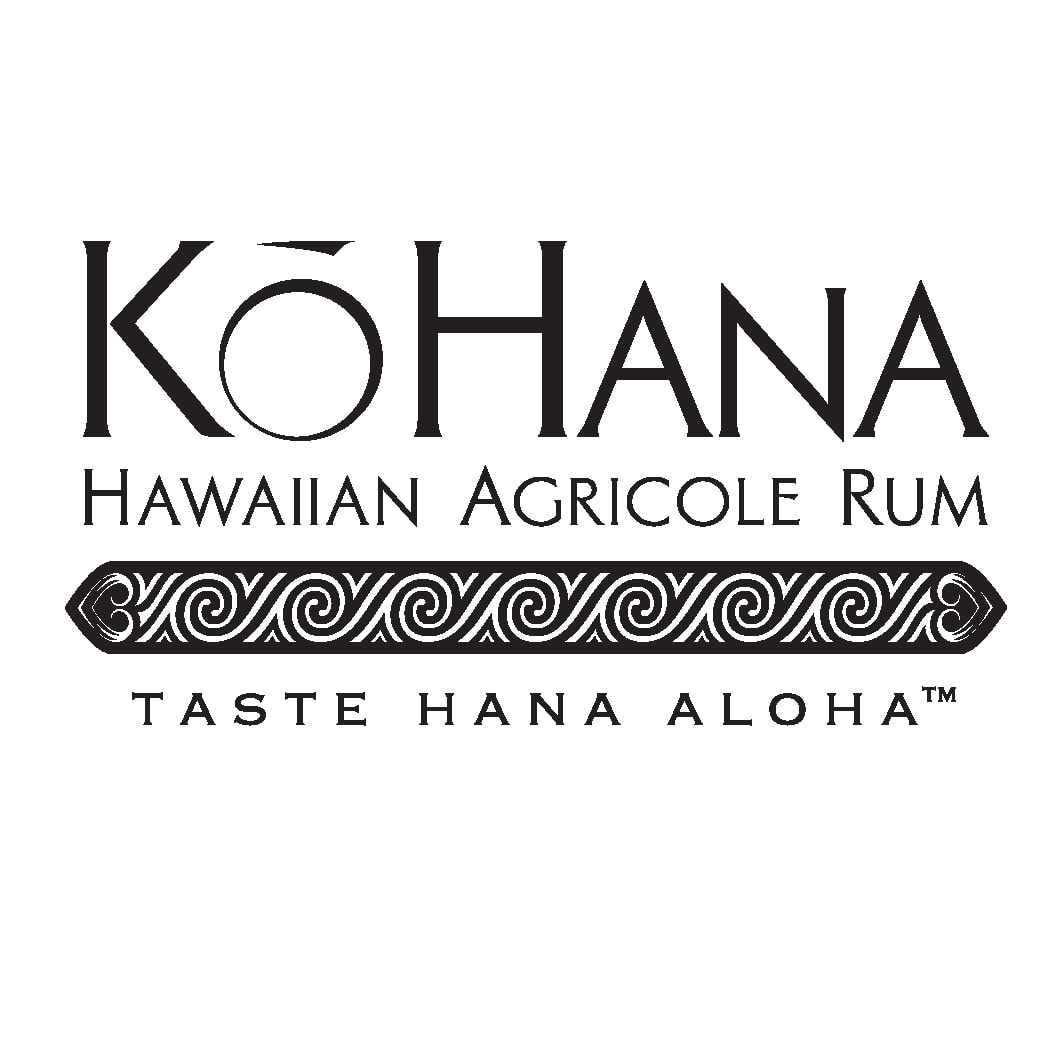
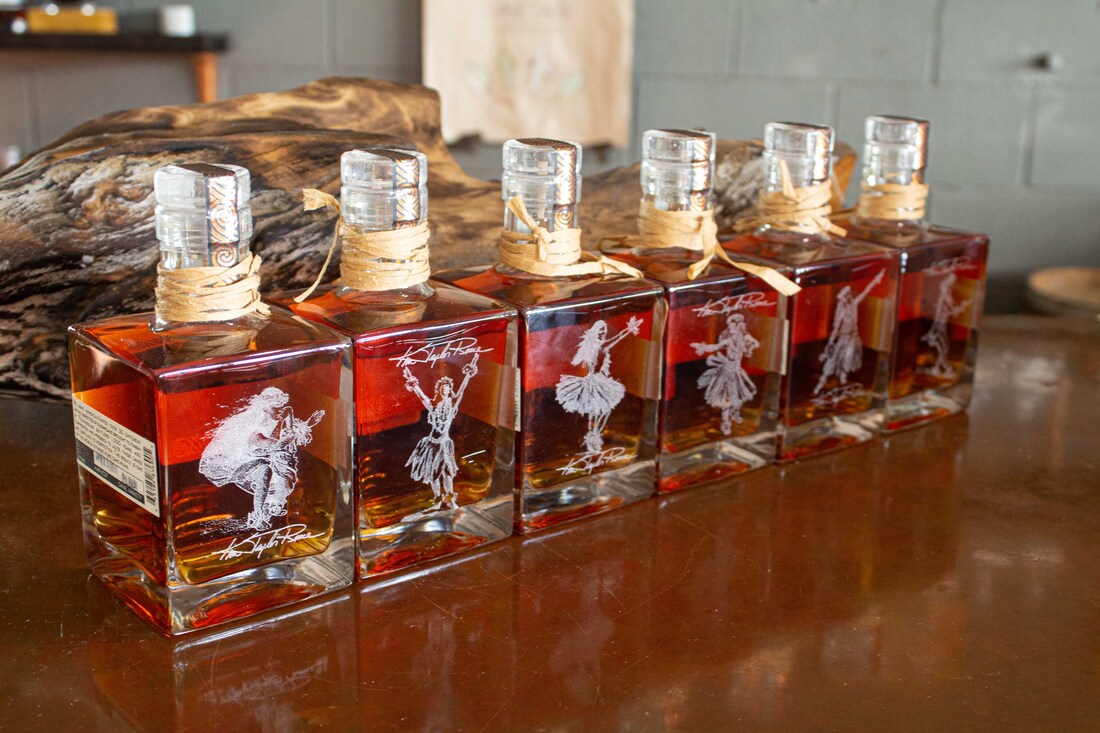
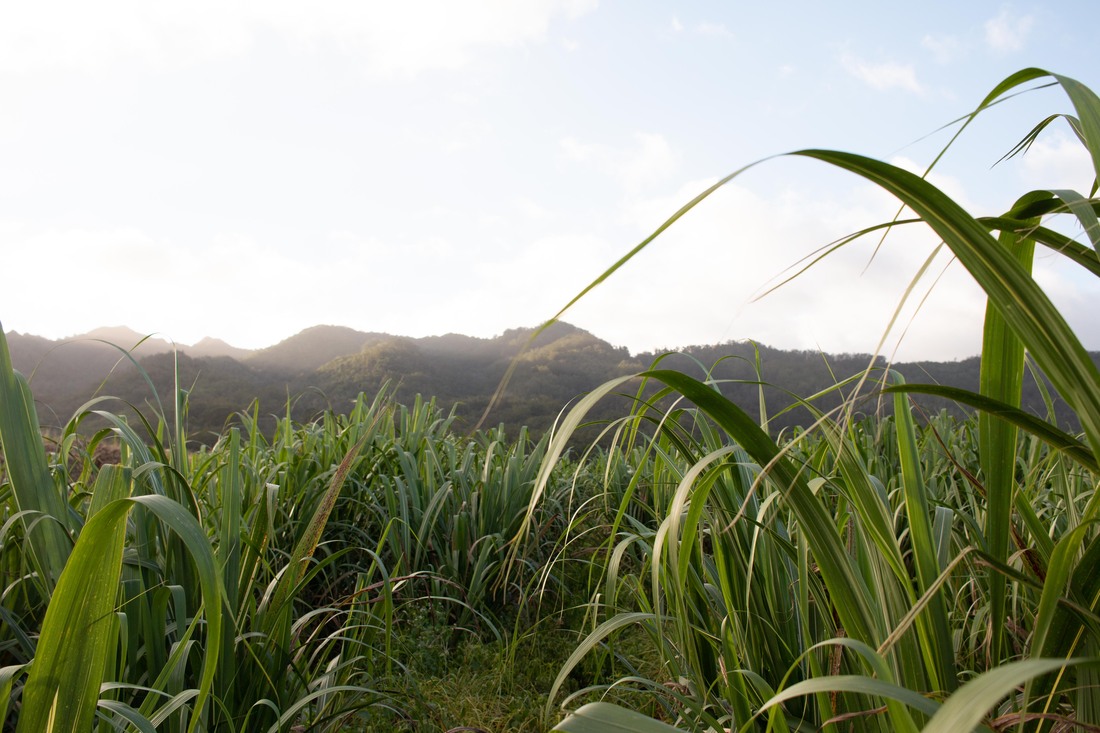
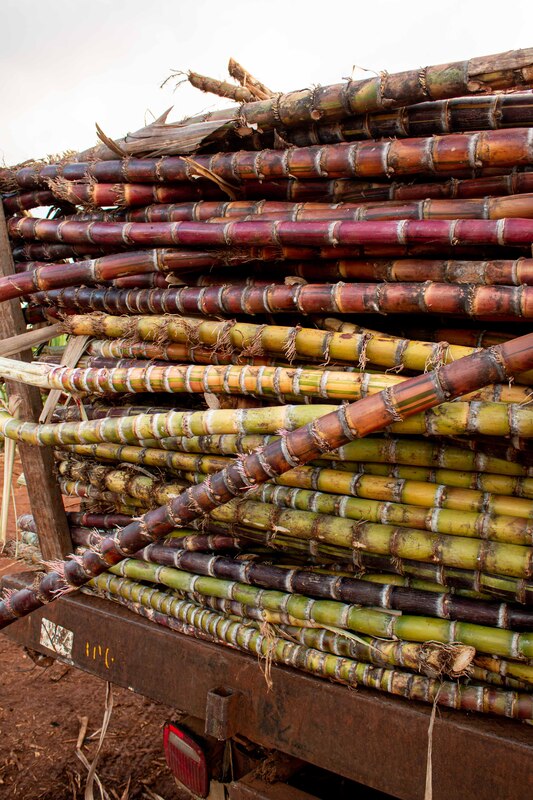
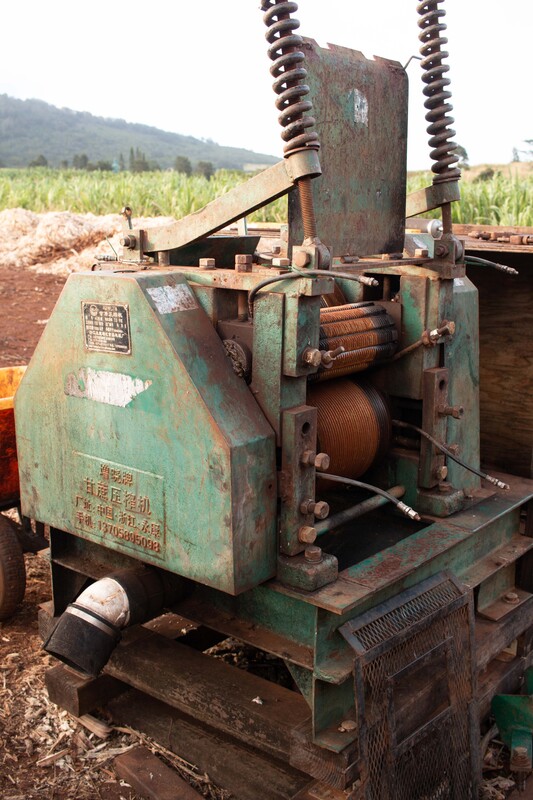
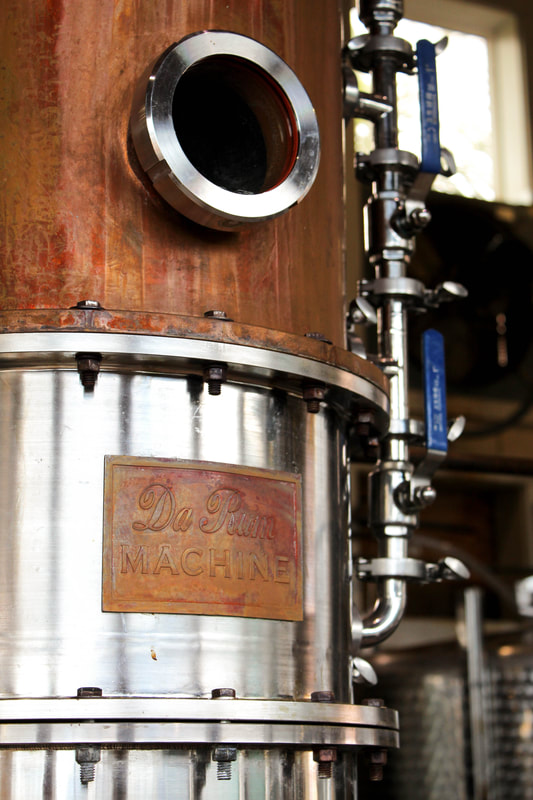
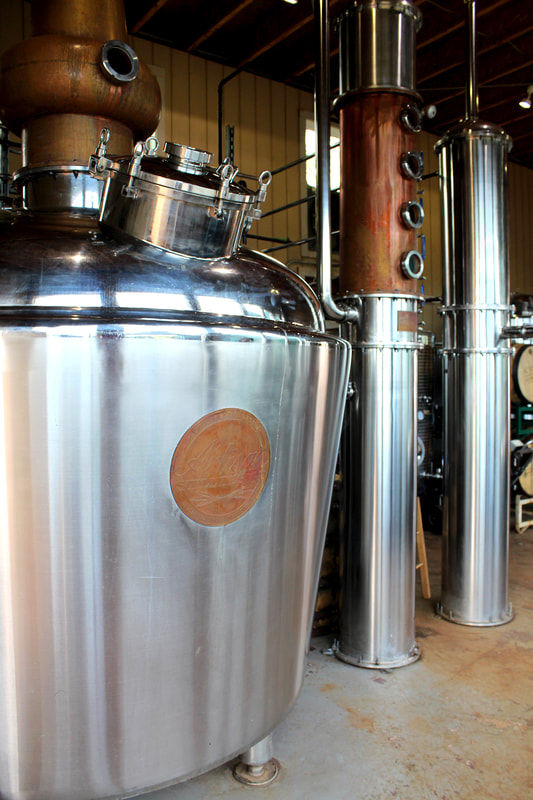
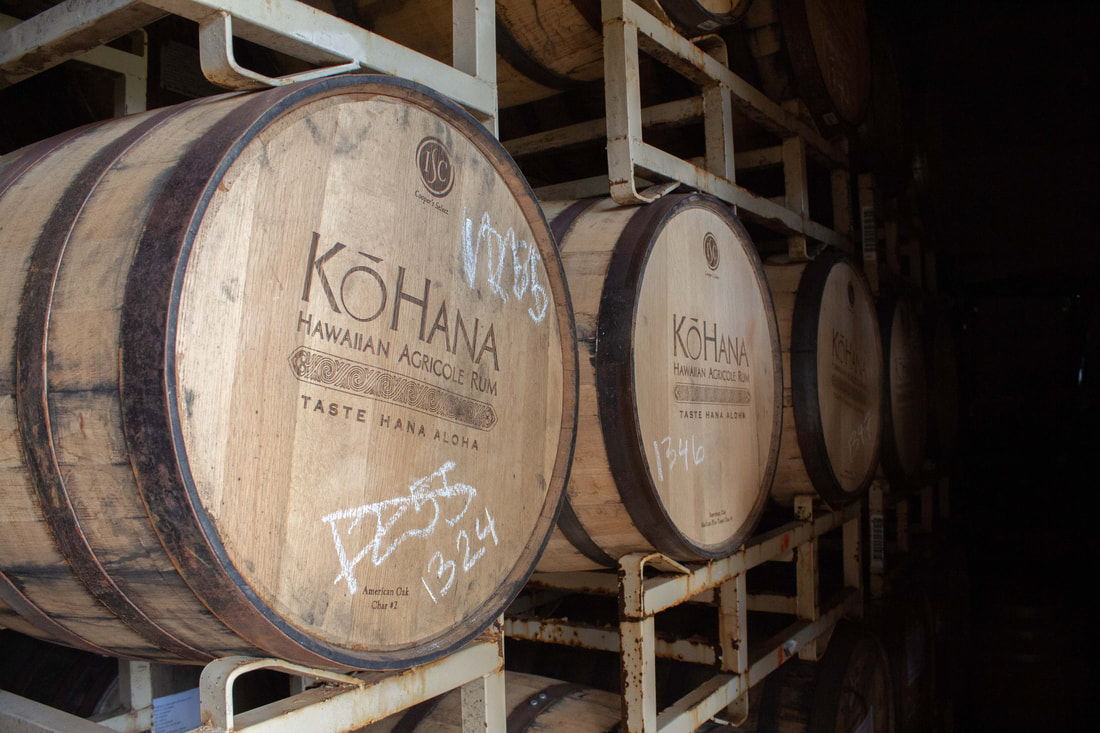
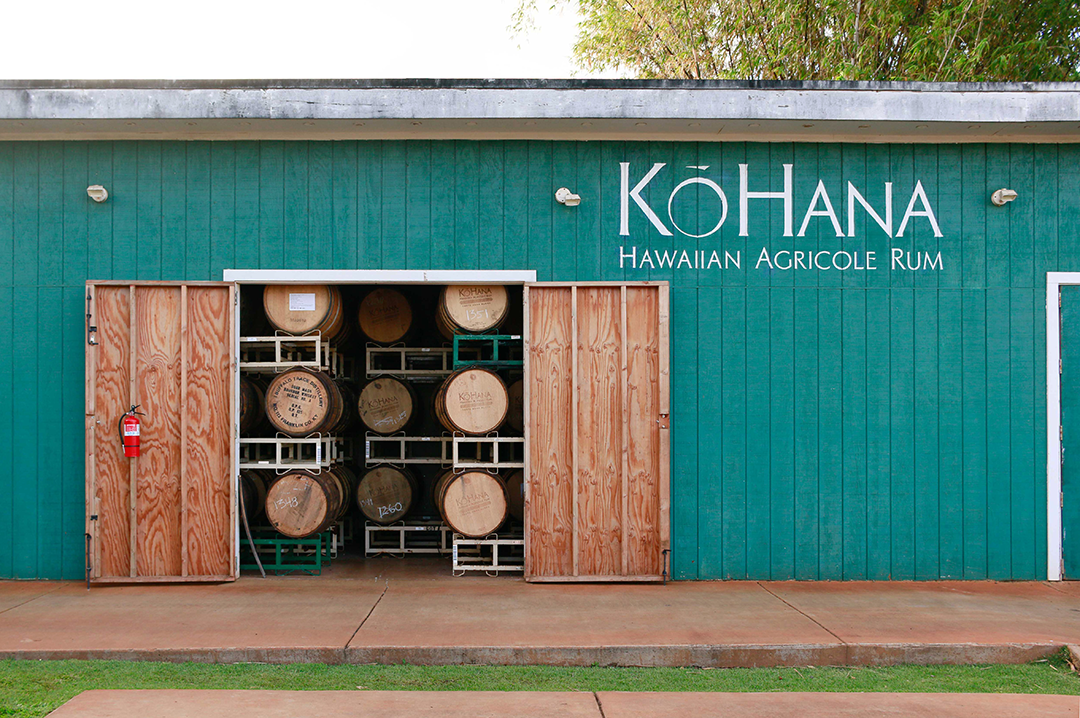
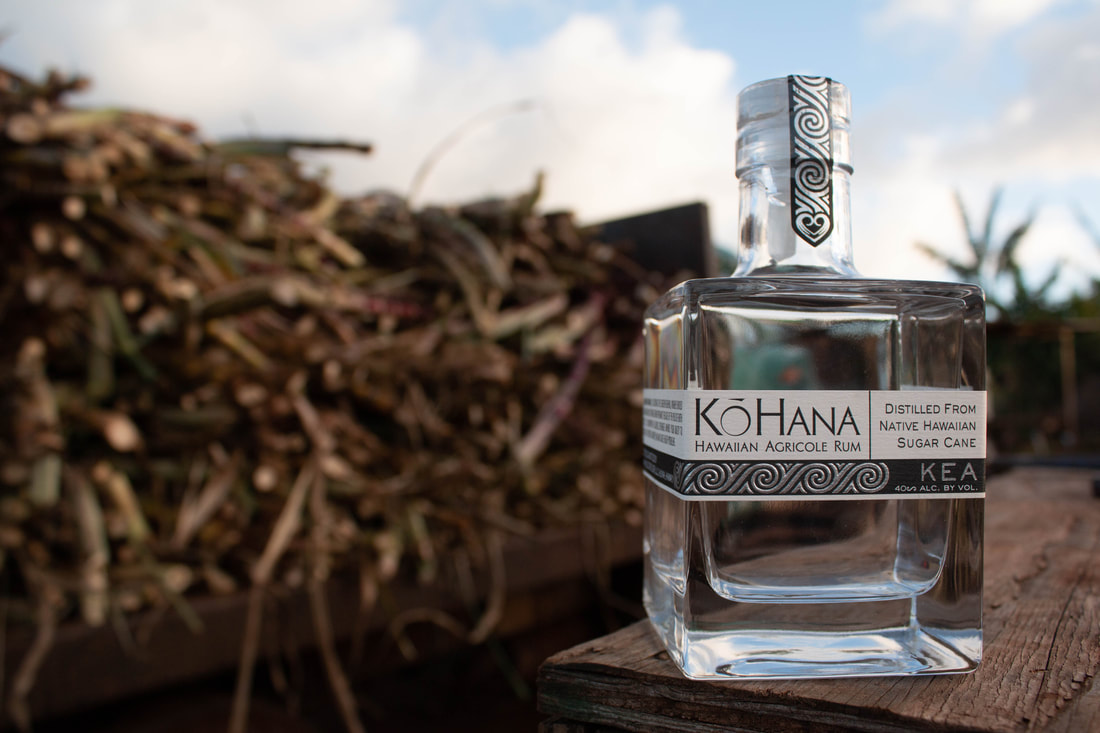
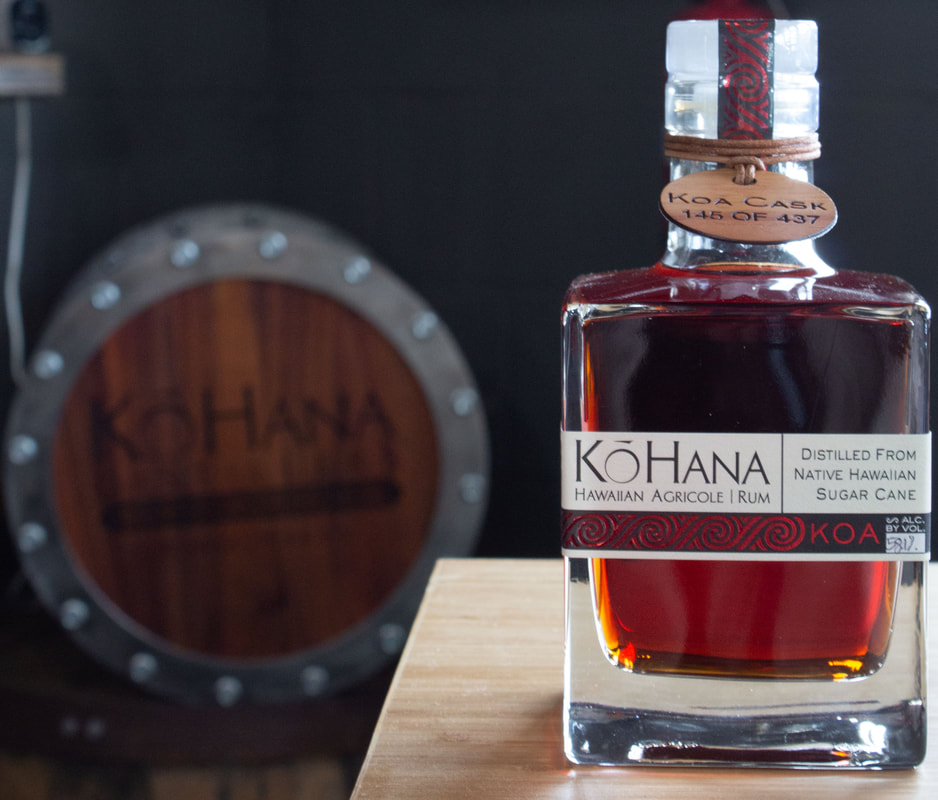
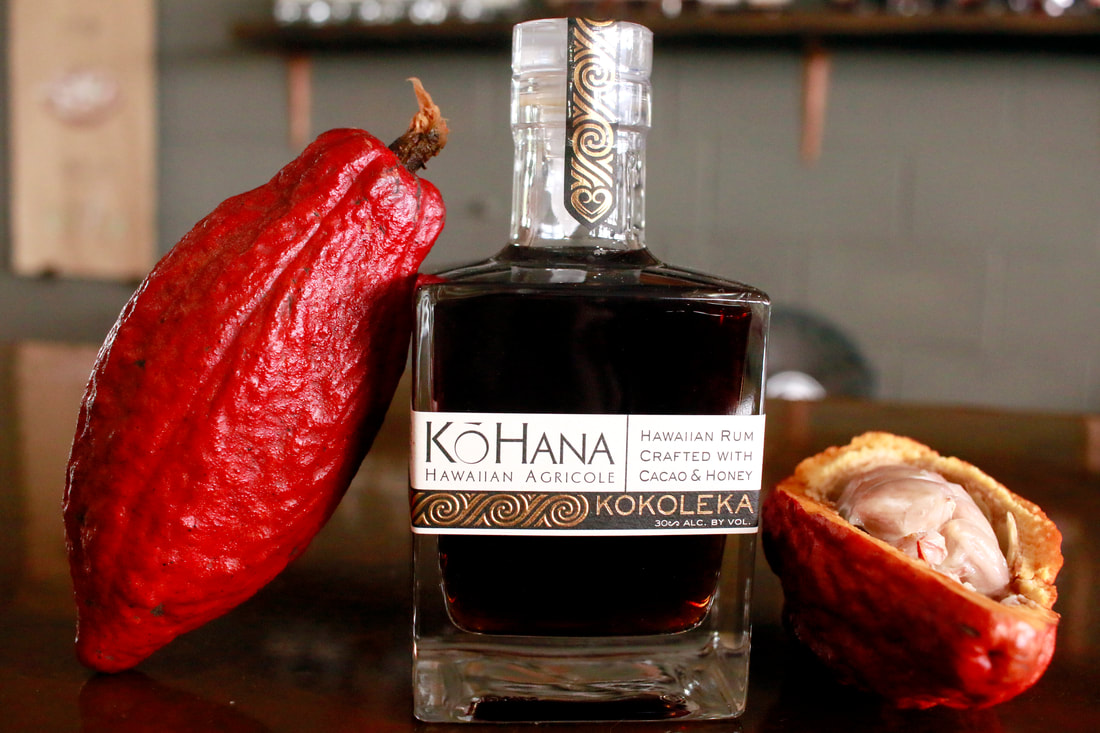
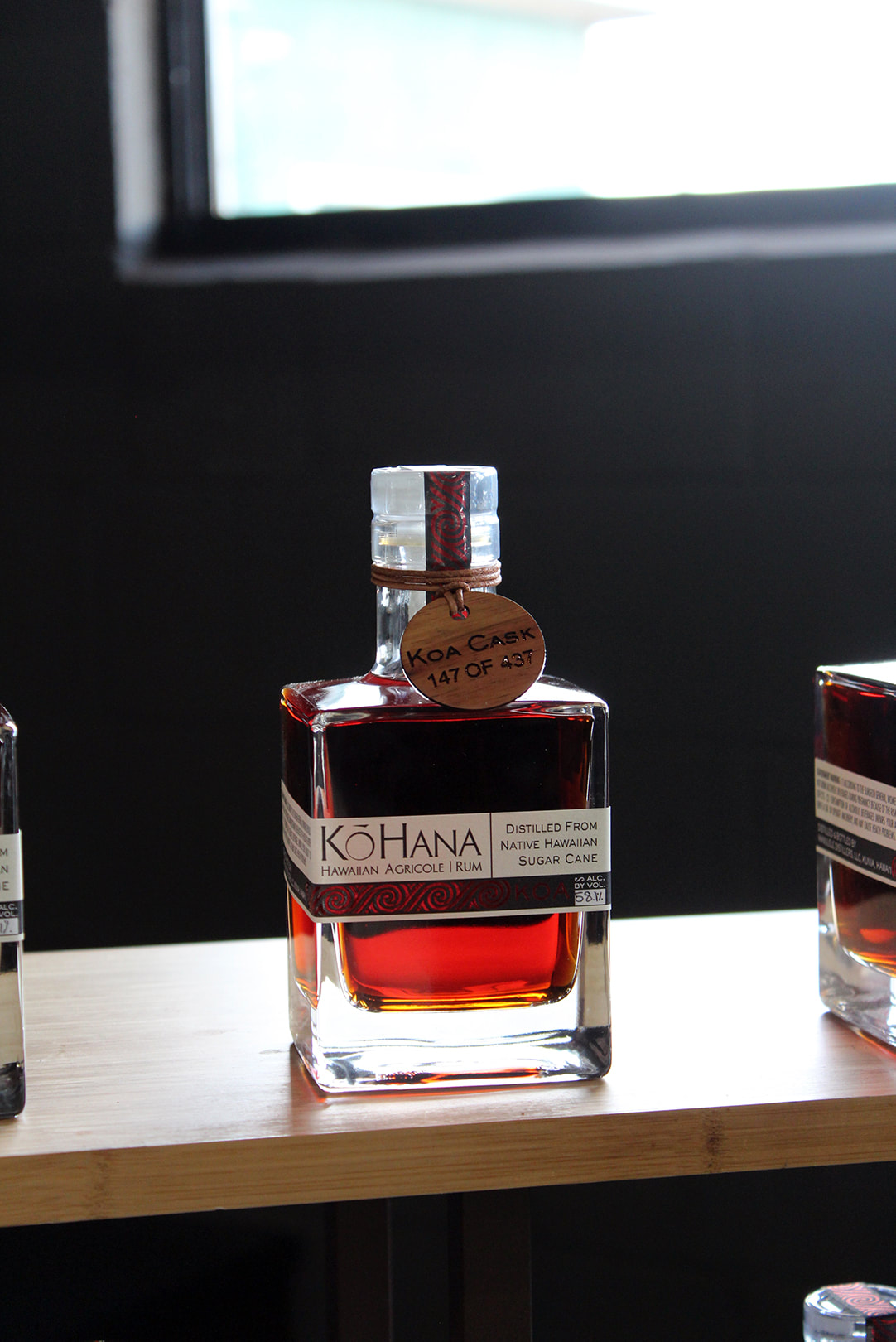
 RSS Feed
RSS Feed